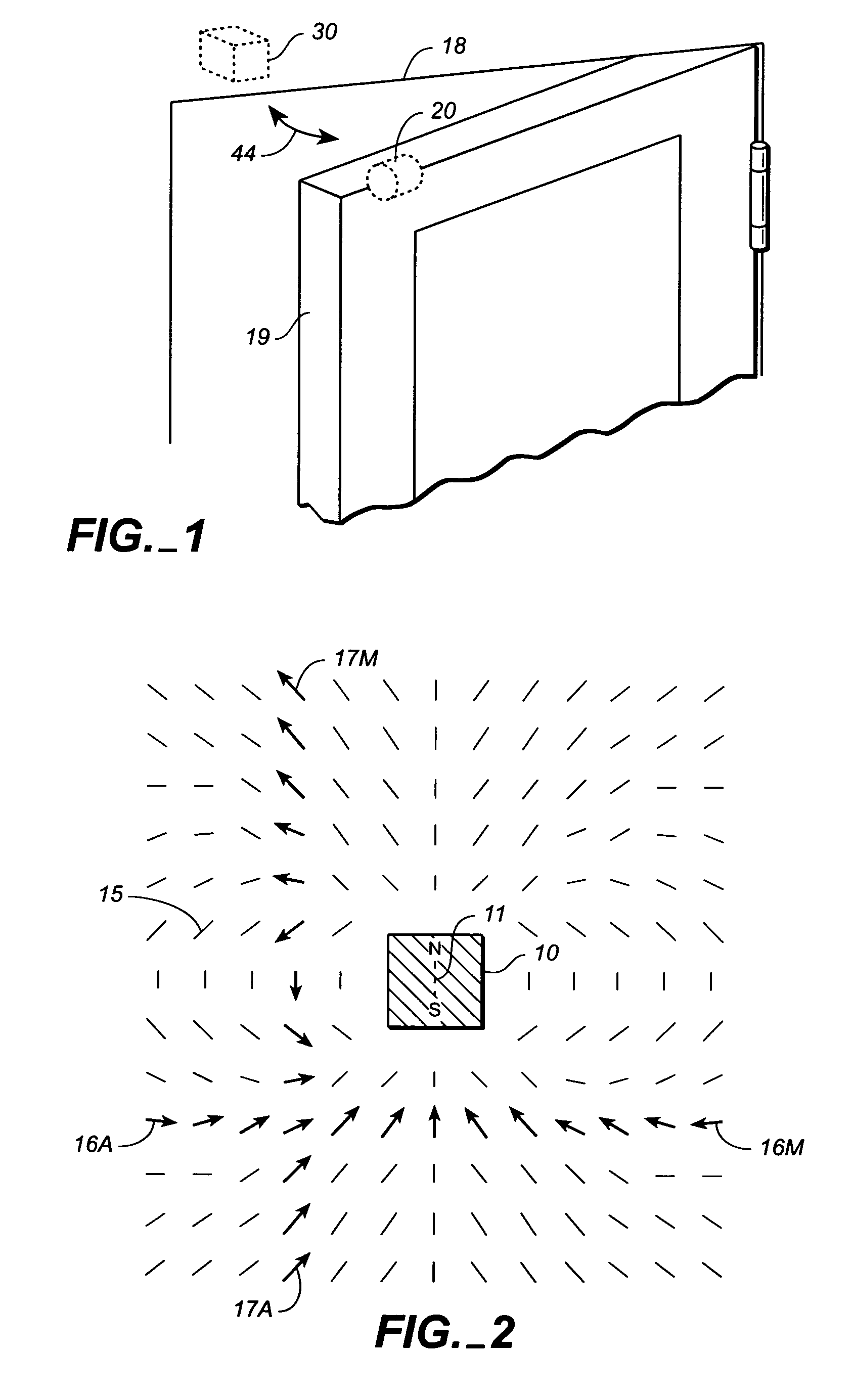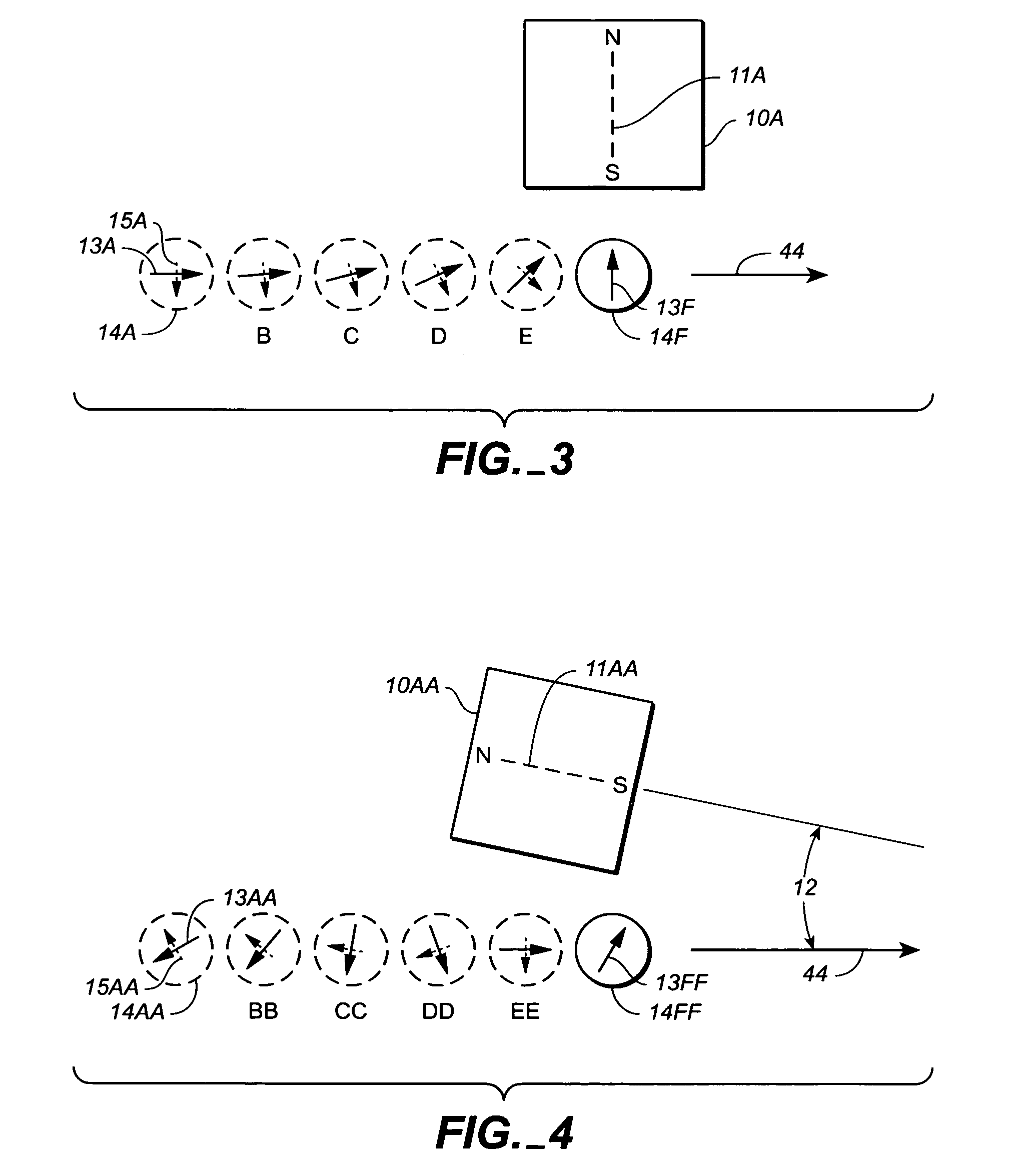Energy absorbing magnetic coupling device
a magnetic coupling device and energy-absorbing technology, applied in the field of latching mechanisms, can solve the problems of dragging on the rotation and slowing down the door, and achieve the effect of improving the magnetic coupling devi
- Summary
- Abstract
- Description
- Claims
- Application Information
AI Technical Summary
Benefits of technology
Problems solved by technology
Method used
Image
Examples
example 1
[0072]A successful experiment was performed of a design similar to the preferred embodiment except that a spherical magnet was used rather than a cylindrical magnet. The rotary magnet, reference magnet and bias magnet were all made of the rare earth magnetic material NdFeB. The rotary magnet was a 9.5 mm diameter sphere, the reference magnet was a 9.5 mm cube and the bias magnet was a disk 9.5 mm diameter and 3 mm thick. The bias magnet was removed from the rotary magnet surface by about 7 mm so that the bias magnet produced a much weaker magnetic field than the reference magnet when the reference magnet is at the point of closest approach (about 2 mm from the rotary magnet).
[0073]Mating two hemispherical cavities formed a spherical cavity. Each hemisphere was slightly larger than the 9.5 mm diameter of the spherical magnet. The hemispherical cavities were drilled into 6.3 mm thick aluminum. A first test was performed using axle grease as the viscous material filling a spherical spa...
example 2
[0076]Thus far, all of the examples had the rotary magnet 20 translate only along a path 44 which does not intersect the reference magnet 30. Another test proved that energy removal could occur even when the reference magnet 30A approached rotary magnet 20A from the direction 47 in FIG. 5. This is the direction parallel to the magnetic axis 31A. The reference magnet would collide with the rotary magnet if it did not first hit a stop. In this experiment, a bias magnet (not shown in FIG. 5) had previously oriented the rotary magnet to an orientation that initially repelled the reference magnet coming from direction 47. Therefore, the initial repulsion removed translational energy when the reference magnet approached. Then the rotary magnet turned 180 degrees inside the housing and the initial repulsion was followed by magnetic attraction. The two magnets were prevented from colliding by a stop. This experiment shows that energy removal can occur with any orientation and translation di...
PUM
 Login to View More
Login to View More Abstract
Description
Claims
Application Information
 Login to View More
Login to View More - R&D
- Intellectual Property
- Life Sciences
- Materials
- Tech Scout
- Unparalleled Data Quality
- Higher Quality Content
- 60% Fewer Hallucinations
Browse by: Latest US Patents, China's latest patents, Technical Efficacy Thesaurus, Application Domain, Technology Topic, Popular Technical Reports.
© 2025 PatSnap. All rights reserved.Legal|Privacy policy|Modern Slavery Act Transparency Statement|Sitemap|About US| Contact US: help@patsnap.com



